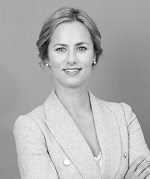Measuring a company’s temperature is not the most common way to invest in the global equity markets, but it is something that Fulcrum Asset Management’s new Fulcrum Climate Change fund has embraced.
The Fulcrum Climate Change fund is the first global equity fund to be climate-aligned.
As well as generating returns to investors, the fund’s aim is to maintain an average portfolio temperature below 2C, in line with the 2015 Paris Climate Agreement.
The Paris Climate Agreement, the first of its kind, was an agreement between the UN members to take a global response to climate change and keeping the global temperature rise this century below 2C.
The Fulcrum Asset Management team pointed out that, a somewhat forgotten part of the Paris Climate Agreement is the pledge to “make finance flows consistent with a pathway towards low greenhouse gas emissions and climate-resilient development”. This is essentially a promise that countries will support the financing of climate-targeting initiatives, meaning that there is already a wealth of investment opportunities in tackling climate change.
A recent example of this was the EU’s European Green Deal launched last year, a policy initiative which the entire €750bn EU Coronavirus Recovery Fund will be channelled through, accelerating a number of climate change trends such as renewable energy and electric vehicles during the recovery.
To create this strategy, Fulcrum collaborated with two sustainability specialists who specialise in both climate change and sustainable investing.
Iceberg Datalab is the provider of the temperature alignment data and Arvella Investment is a sustainable wealth manager who provided knowledge about the sustainable investment space.
The result is a temperature reading for an individual stock.
Investing in 150-200 stocks across 25 themes – including wind, solar, rails and agriculture – the global equity fund won’t invest in companies with a temperature rating above 2.5C. 
Fulcrum Climate Change balances its climate alignment with return expectations by “address[ing] societal challenges that generate competitive financial returns for investors,” according to Fulcrum.
One key element is the fund’s diversification, which is also crucial for differentiating the fund to its competitors, according to Fulcrum’s head of discretionary strategies Nabeel Abdoula (pictured).
Unlike other climate change funds on the market, said Abdoula, the recently launched strategy gives more diversified exposure to the global equities market, preventing a narrow approach based on just minimising carbon emissions alone for example.
Investing in a wide range of themes “will allow investors to make a larger shift in their asset allocation”, he said.
“We don’t want to ask investors to, for arguments sake, put all of their money into one wind investment. As great as that is from an impact perspective, from a finance perspective it’s too concentrated.
“It is more reasonable to create a portfolio that has the right impact but is investing in a diversified way. And that encourages people to allocate a larger capital towards impact investing through the diversified way and that is really the zone that the process is trying to gear towards.”
Awareness of sustainable and ESG (environmental, social & governance) strategies has increased in recent years and popularity has accelerated in 2020 as they have rallied strongest following the Covid-19 outbreak.
On why they chose to invest in climate change resolutions the asset manager noted that, “there is no bigger long-term economic challenge than mitigating climate change”.
Abdoula said, Fulcrum as a company, takes a top-down, macroeconomic view, which lends itself to impact investing and climate change as it is a global issue.
He said: “Over the last two years we’ve been trying to think about where can we really deploy our resources and where can we really make an impact, and [launch] something which is generally different to what is already out there.
“You already have those really strong players in some areas of sustainable investing and we wanted to find an area where we could generally add something different.” 
Abdoula added: “Climate change fits our investment process because it is a global issue and it is one in which we have something unique to say about.”
The climate alignment of the fund is a key distinguishing element, but the actual temperature reading itself is innovative in the ESG space.
One of the major ongoing issues with sustainable and ESG investing is the lack of definition around exactly what that means and entails, as it can be personal for each individual investor.
Iselin Aslakstrom (pictured), responsible investment officer for the Fulcrum Climate Change fund, said: “What makes this fund more special in our eyes is that it is dedicated to actually mitigating climate change on a large scale.
“It’s even stronger with the fact that it’s easy to understand and compare, because no one really knows what an ESG score is,” she added, noting it is easy to compare a temperature reading.
The development of more comparable measures in ESG is something which Tom Sparke, investment manager at discretionary wealth manager GDIM, said he welcomes.
He said: “The philosophy behind the new Fulcrum fund is positive and creates a real, tangible structure to measure companies by in an area that is notoriously hard to quantify.
“The ‘grey areas’ that exist in ESG funds are numerous and often revolve around the balance of positive environmental or social outcomes versus the aspects of the company that may be less desirable.
“By targeting a consistent, constant measure, the fund and its investors can ensure that it is achieving its aims. I would welcome more of these type of measures in the ESG realm, potentially even leading to some sort of barometer of other factors such as social impact, that would be ideal.”
Fulcrum’s Abdoula added: “I think, when it comes to ESG and when it comes to sustainable investing our edge, our approach is really to look over the finance theory to sustainable investing.
“We’re not going to be the best climate change experts in the world – there are others who are more talented than us, much more. But we think that we have done a lot of finance research over our history at Fulcrum and we can bring that to the market.”
Currently, the average temperature of the Fulcrum Climate Change fund is 1.9C.





